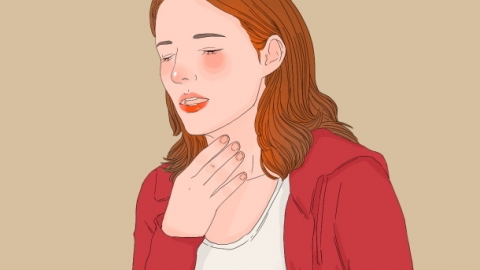What are the symptoms of damp-heat in the liver and gallbladder?
Generally, damp-heat in the liver and gallbladder refers to a syndrome pattern caused by the accumulation of dampness and heat in these organs, leading to dysfunction of the liver and gallbladder. Common symptoms mainly include distending or aching pain in the hypochondriac region, bitter taste and stickiness in the mouth, jaundice, abnormal urination, and disturbances in appetite and digestion. Detailed analysis is as follows:

1. Distending Pain in the Hypochondriac Region: Damp-heat in the liver and gallbladder often causes distending or dull pain in the hypochondriac area. The severity of the pain may vary, and it can worsen after physical exertion or emotional fluctuations. In some individuals, the pain may radiate to the shoulder and back, affecting daily activities and rest.
2. Bitter Taste and Stickiness in the Mouth: Patients affected by damp-heat in the liver and gallbladder often experience a bitter taste in the mouth accompanied by a sticky sensation. This may persist despite frequent drinking. Symptoms may be more pronounced upon waking in the morning and may also be accompanied by bad breath.
3. Jaundice: Damp-heat affecting the liver and gallbladder may obstruct bile excretion, leading to jaundice. This manifests as yellowing of the skin and sclera, and darkened urine resembling strong tea. The severity of jaundice is usually related to the degree of accumulated damp-heat, and the color of jaundice may change as the condition evolves.
4. Abnormal Urination: Patients may experience short, painful urination with yellowish urine. Some individuals may also have increased urinary frequency, urgency, or a burning sensation during urination. This occurs because damp-heat descends to the bladder, impairing its normal transformation and transportation functions, thereby causing abnormal excretion of urine.
5. Disturbances in Appetite and Digestion: Damp-heat in the liver and gallbladder can impair the spleen and stomach's transformation and transportation functions. Patients often experience poor appetite and nausea with a tendency to vomit. They may also suffer from abdominal distension, sticky and unsatisfactory bowel movements, or loose stools. These digestive symptoms may worsen after consuming greasy foods.
It is recommended that patients experiencing the above symptoms maintain a light diet, avoid spicy, greasy, and cold foods, maintain regular作息 (作息 should be translated as "作息" if preserving Chinese terms, otherwise "作息" can be translated as "rest and work patterns" or simply "lifestyle routines"), avoid staying up late and excessive fatigue, and maintain emotional stability, avoiding irritability or depression.






